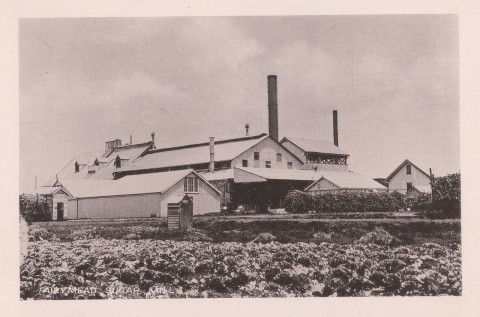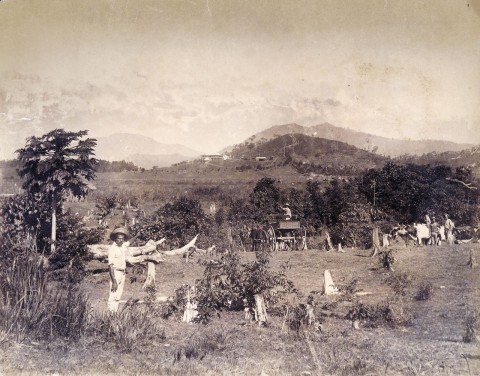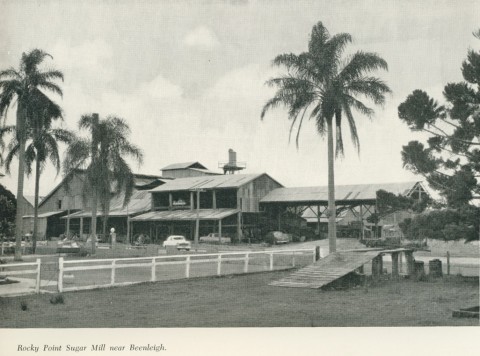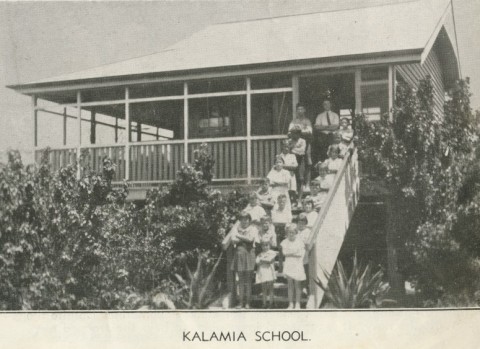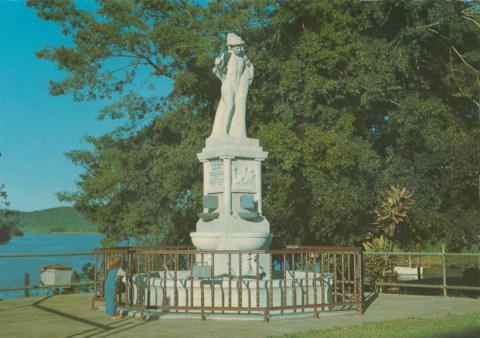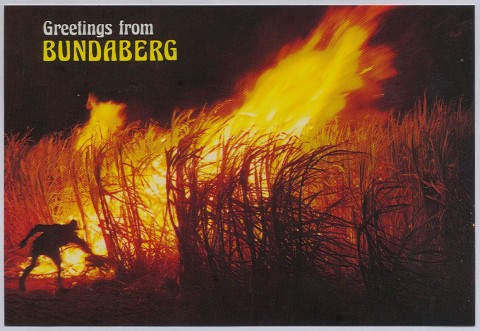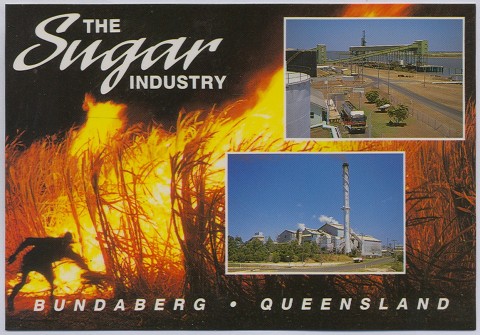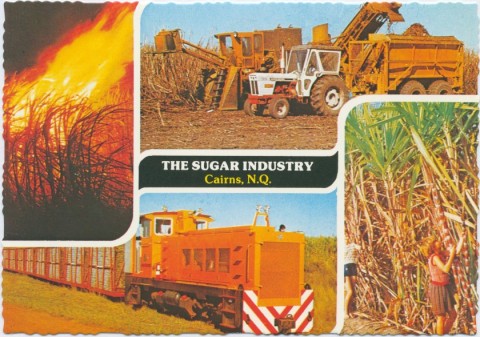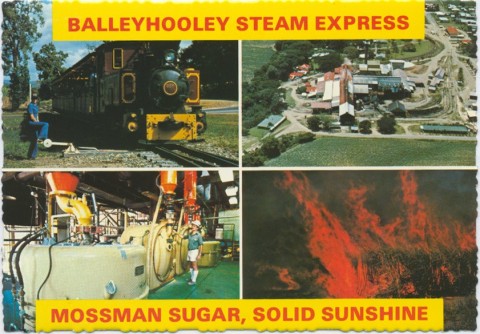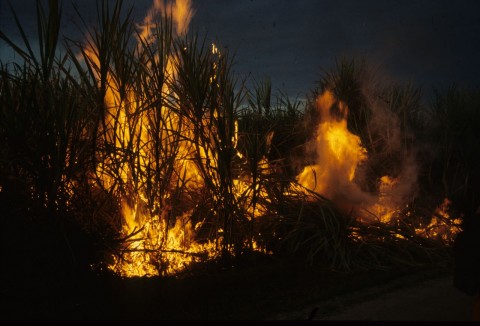Queensland has four coastal sugar-growing regions where average annual rainfall is 1520 mm or more. They are briefly described below, travelling from south to north roughly in accordance with their chronology.
South Queensland, Moreton, Maryborough and Bundaberg
Captain Louis Hope is credited with growing the first commercial crop at Ormiston in 1863. By the late 1860s cane was grown along the Oxley Creek and Brisbane River flats (Chelmer, Corinda, Hemmant, Bulimba). There was a convict plantation on St Helena Island. Within a few years there were also crops in the Albert and Logan districts (eg Pimpama), and in the Maryborough-Wide Bay district. An estimated thirty juice mills were operating in 1870.
Severe frosts in the 1870s greatly reduced sugar growing in the Brisbane district and, in any event, better growing conditions were available at Bundaberg and Mackay. In the 1880s juice mills were replaced by larger-scale enterprises. Examples of the new mills are:
| Rocky Point | Near Pimpama | 1879-currenti |
| Eagleby | Near Beenleigh | c1881-1943 |
| Moreton | Nambour | 1896-2004 |
| Maryborough | 1895-currenti | |
| Mount Bauple | South of Maryborough | c1900-50 |
| Qunaba | East of Bundaberg | c1880-1985 |
| Millaquin | Bundaberg | 1882-currentb |
| Bingera | West of Bundaberg | 1884-currentb |
| Fairymead | North of Bundaberg | 1884-2005 |
| Isis | North-west of Childers | 1893-currenti |
| Gin Gin | 1896-1974 |
i Independent mill
b Bundaberg sugar
Mackay – Proserpine
Sugar was grown at Mackay as early as 1868, and the first Pleystowe mill is recorded in that year. (Pleystowe is 16 km west of Mackay, in the Pioneer River valley.)
Like Bundaberg at its beginning, Mackay had a multitude of small mills. Over 34 are recorded in Harry Easterby's Queensland Sugar Industry before larger-scale central mills were built. When Easterby's book was published in 1932 only seven of the 34 mills continued:
| Pleystowe | Midway between Mackay and Marian | 1869-currentm |
| Farleigh | North of Mackay | 1883-currentm |
| Racecourse | Mackay | 1887-currentm |
| North Eton | South-west of Mackay | 1887-1988 |
| Plane Creek | Sarina | 1893-currentc |
| Marian | Pioneer River valley | 1894-currentm |
| Proserpine | 1897-currenti | |
| Cattle Creek | Finch Hatton, west of Mackay | 1906-90 |
m Mackay Sugar Ltd
c Commonwealth Sugar Refineries
Herbert – Burdekin (Ingham, Home Hill, Ayr)
This area is south and north of Townsville. Sugar growing began at the Burdekin in about 1879, and the first mills started in 1884. Crops were held back by periodic dry spells in the Burdekin delta until underground water was successfully extracted in the late 1880s. Important sugar mills are:
| Kalamia | North of Ayr | 1880-currentc |
| Pioneer | North of Ayr | 1883-currentc |
| Invicta | South of Townsville | 1919-currentc |
| Inkerman | South of Ayr | 1914-currentc |
Ingham
The Ingham area, on the Herbert River, apparently had an operating sugar mill in 1871. The Macknade mill (1874) was enlarged by Commonwealth Sugar Refineries. The two big mills are:
| Macknade | Ingham area | 1874-currentc |
| Victoria | Ingham area | 1883-currentc |
Northern Sugar Region
Northern sugar region is in two parts: Tully to Cairns; and Mossman.
The Melbourne biscuit manufacturer, Thomas Swallow, started the Hambledon mill, Gordonvale, in 1881, within a year of the Johnstone River district being opened up for sugar growing. The Innisfail/Mourilyan area was not far behind. Sugar mills were opened in two basic stages; private-sector central mills and farmers' cooperative mills. The important mills are:
| Hambledon | Gordonvale | 1881-1992 |
| Mourilyan | 1882-2006 | |
| Goondi | North-west of Innisfail | 1883-1986 |
| Mulgrave | Gordonvale | 1893-currenti |
| Mossman | 1897-currenti | |
| Babinda | Co-op until 1989, south of Cairns | 1915-currentt |
| South Johnstone | Co-op until 1987 | 1915-currentt |
| Tully | Co-op until 1990 | 1925-currenti |
Many Tully-district farms were a soldier-settlement project.
In the Cairns area the Tableland millt, the first in 73 years, opened in 1998. It is 24 km south-west of Mareeba.
The sugar-regions' share of Queensland sugar production has swung from south to north, although among the northern regions there have been swings aided by irrigation from projects such as the Burdekin River dam.
| Region | Sugar Cane | ||
|---|---|---|---|
| 1890 (acres) |
1940 (tons) |
2008 (tons) |
|
| Northern | 5369 (13.3%) |
1,663,000 (32.1%) |
6,145,000 (20.4%) |
| Herbert/Burdekin | 8113 (20.1%) |
1,027,000 (19.8%) |
12,343,000 (40.1%) |
| Mackay/Proserpine | 13,426 (33.2%) |
1,275,000 (24.6%) |
8,123,000 (26.9%) |
| Southern | 13,493 (33.4%) |
1,217,000 (23.5%) |
3,555,000 (11.8%) |
Each region has bulk-sugar export terminals which replaced previous handling with jute bags:
| Northern | Cairns harbour | 1964 |
| Mourilyan harbour | 1960 | |
| Herbert/Burdekin | Lucinda Point | 1958 |
| Townsville | 1959 | |
| Mackay/Proserpine | Mackay harbour | 1957 |
| Southern | Bundaberg port | 1958 |
| Brisbane | 1985 |
Entries can be found on place-names in bold text above.
Several sugar mills have published histories.
Harry Easterby, Queensland sugar industry, Brisbane, Government Printer, c1932
J. Brigden, The story of sugar, Brisbane, Government Printer, 1932
Australian sugar year book, annual 1941- , various publishers
